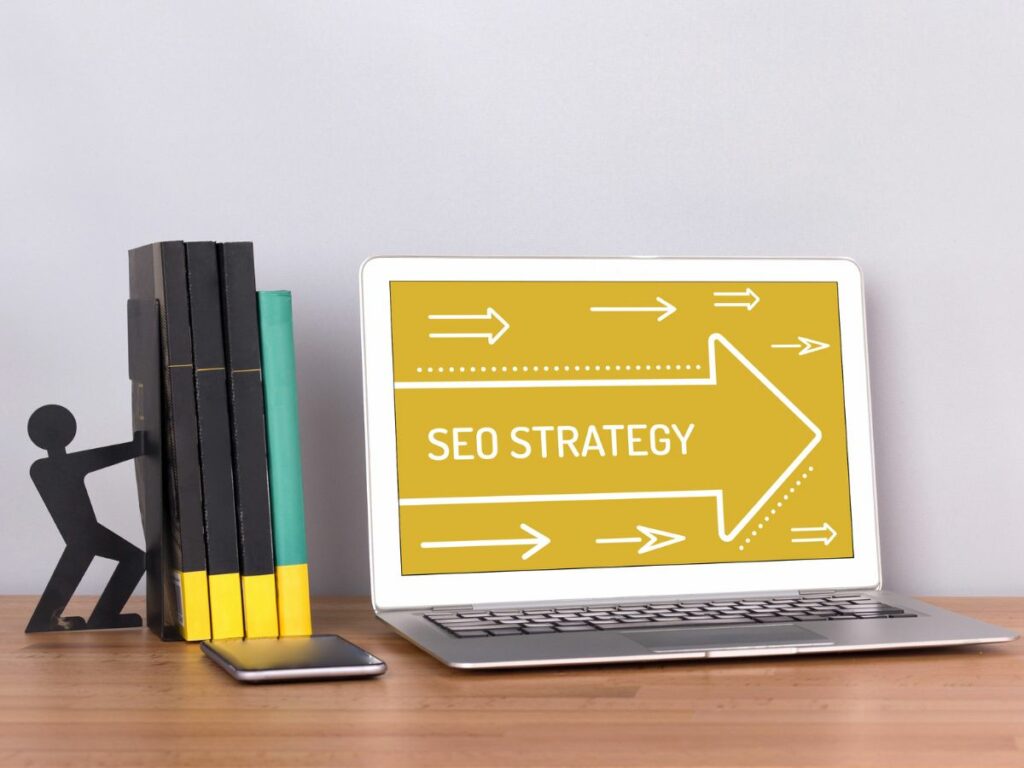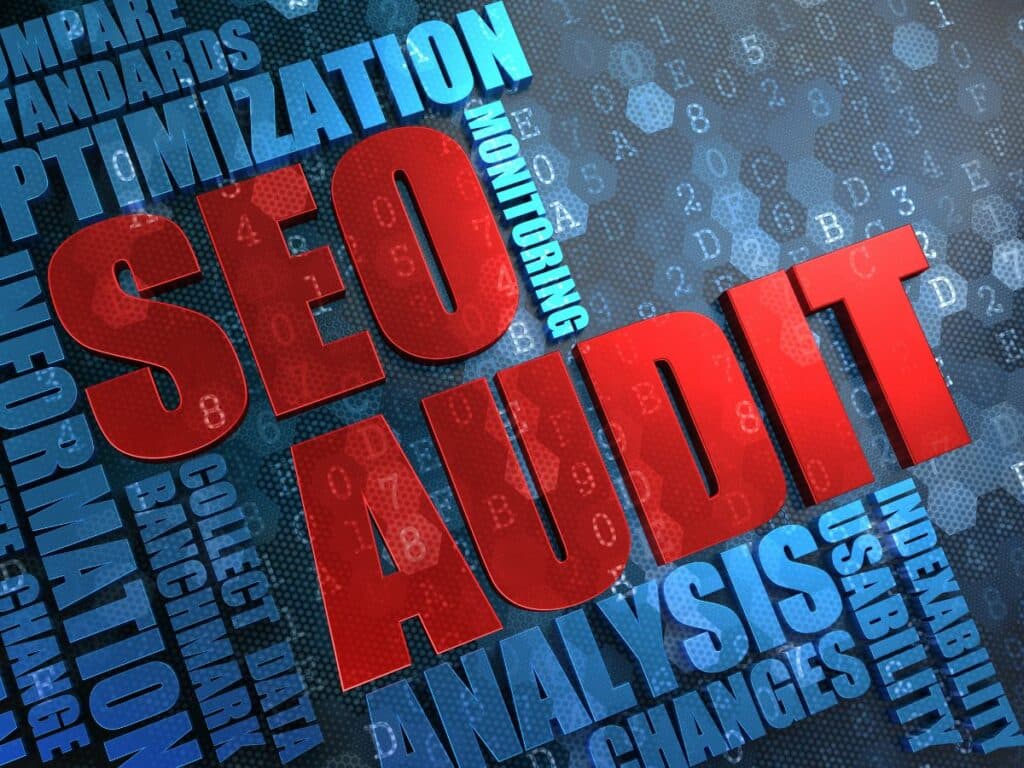SaaS or software as a service has become a thriving industry in this digital world, as delivering software solutions works well both for our business and personal needs. The SaaS industry has constantly been growing over the last few years.
As of 2022, the SaaS is considered a giant with a high market value of $186.6 billion with a consistent annual growth rate of 18%. By the year 2030, the SaaS industry’s value is expected to be $700 billion and the industrial revenue is expected to reach $369.4 billion by 2024. The staggering growth of the SaaS industry is forecasted to generate a recurring annual revenue of $5 million to $100 million.
In a growing industry like this, the competition among different companies is really tough. As there are so many SaaS companies out there, potential customers can choose from a large number of options. As a result, it has become necessary for SaaS companies to stay ahead of competitors, especially in search engine rankings or SERPs.
According to Google Keyword Planner, approximately 100k-1M online searches are conducted by internet users per month to find specific software for project management. This is a great example of SEO’s potential in the SaaS industry. The terms ‘software for project management,’ ‘software for the employee recognition program‘, etc., are used while conducting searches.

It means that it’s even more critical now for SaaS companies to put effort into SEO or search engine optimization to stand out from the competition. Search engine optimization is the process of making sure that your target audience or potential customers can find you through Google search easily. If you optimize your website properly, you’ll be able to rank higher on the search engines than your competitors, which will make you more visible to the audience than them.

What is Enterprise SaaS SEO?
Enterprise SEO for SaaS is quite different than usual SEO efforts. The main catch is that SaaS SEO deals with huge companies with thousands of web pages.
For running a successful Enterprise SaaS SEO campaign, just expert knowledge of technical SEO won’t help you much.
So many different keywords and so much content will have to be juggled to optimize a SaaS Enterprise website. That’s why Enterprise SaaS SEO takes a lot of strategies and creative thinking.
14 Enterprise SaaS SEO Strategies for Growing Your Business
You must adopt proper strategies to conduct your enterprise SaaS SEO. Otherwise, it won’t be as successful as you desire it to be. Here are 14 strategies that you can follow to grow your SaaS business-
1. In-Depth Sitewide SEO Audit
Enterprise SaaS SEO starts with an in-depth SEO audit, just like any other SEO campaign. Through this audit, you’ll be checking indexability, site structure, backlink, duplicate content, missing or double (title, meta, description), mobile responsiveness, loading speed, and more.
You can use tools like Ahrefs, Screaming Frog, etc., for an in-depth SEO audit. You will find some answers that are vital in terms of your Enterprise SaaS SEO. You will know the website’s current situation, how quickly it loads, how many backlinks you have, which pages have missing elements (title, meta description, heading, image, etc.), and much more.
After completing the audit, you can easily prepare your next task plan once the audit is done. It’ll help you build a solid SEO strategy that will make your website grow and rank higher in search engines.

Technical Issues Fixing
After you’re done with the audit, there’ll be some technical issues that you’ll need to fix. You’ll be able to fix some of them instantly, whereas some of them will need time to fix.
The issues you’ll be able to fix instantly are, robots.txt, sitemap, index deindex page setup, speed optimization, internal redirect, bad link disavow, broken link, 404 pages, and more.
The issues that’ll require some time to fix include, the content heading, duplicate title, meta, image, etc. You’ll need to fix these for each content.
2. Finding Canonical Issues and Fixing Them
When a site has multiple URLs that display identical or similar content, canonical issues occur. From our personal experience, we have found these issues a lot of times. They are often caused by not having proper redirects in place.
Google doesn’t want to include identical or duplicate content in its index. When Google discovers identical pages, it chooses a canonical version of the page and eliminates the other versions of that page from the search results. Google might also select a URL that isn’t your preferred URL to be indexed.
Also, if your content can be accessed through multiple URLs, other sites might use different URLs while citing your content. This will diversify the equity of your link across multiple pages and dilute it. So, find out if your site has canonical issues and fix them soon before starting with your SEO.
If you find any duplicate pages through your audit, you will need to tag them as canonical.

3. Backlink Audit and Internal Linking
To properly conduct your Enterprise SaaS SEO, you need to perform a backlink audit. This will allow you to check your site if it’s in good shape or not.
Being in good shape means there are no spammy or bad backlinks that can hinder your future SEO efforts, or even worse, trigger a Google penalty. The penalty can get your website heavily deranked and even banned from appearing in the search results.
An audit will help you analyze all your current links and evaluate if they are suitable for your site or not. Make sure to get rid of all the bad and underperforming backlinks and try to add good-quality backlinks. This will help enhance your SEO and size up a competitor.
After you find out the bad links, you’ll need to submit them at Google Disavow. This will help you get rid of them.
Internal linking is extremely important too, as it helps the search engines crawl through your website and understand how each webpage and content relate to each other.
The search engine must also identify the purpose of the content on your website, so internal linking helps search engines relate and cross-refer specific queries on the search results.
On another note, proper internal linking will make your organic search traffic more fluid and it can even increase the amount of time people will spend on your website due to enhanced user experience. This will help search engines understand that your content is appealing so which will increase the scope of ranking top on the search results.
4. Current Ranking Page/ Keyword Review
You need to review the current keywords you are using and determine if they are bringing in good results for you or not. If you cannot rank high with your existing keywords, find new relevant keywords that will help you rank higher in the search engines. Then optimize your website based on those keywords.
Your current ranking page also needs to be reviewed to determine how much optimization your site needs to rank higher in the search engines and bring in better results for your business. Reviewing the current rank page is paramount before you start forming the strategy for your Enterprise SaaS SEO.
After reviewing the content and keywords, you’ll need to create two slots, one for low-ranked ones and the other for the higher-ranked ones. For the higher-ranked ones, the optimization will have to be small. On the other hand, the low-ranked ones will need high-scale optimization.
5. Content Optimization
You need to optimize the content you already have on your site. Your content might not be as impressive, or even if they are good, it might be underperforming. You need to change your content to make sure that your target audience is engaging with your content. As a result, your traffic will increase, and your ranking will go up.
The low-ranked pages you’ve found through reviewing your content ranking pages and keywords, you’ll need to start optimizing with those. Their content needs high-scale optimization.
You’ll need to find out weak content and determine what’s wrong with them. Then make sure to bring in the necessary changes for the content to become highly engaging and of good quality.
Here are a few things that you can optimize to optimize your content,
i. Title Optimization
Optimize the titles of your content. Add a title to those that don’t have any, and change the title to a better quality one for those with a weak title.
There are two kinds of titles; SEO Title and Inner Title. You’ll need to optimize both technically. If the inner title and the SEO title aren’t the same after Google gets a new update, Google will show the inner title in the SERPs. So, make sure to optimize the titles carefully and keep the titles relevant.
ii. Internal Linking
Even though most SEO professionals emphasize external linking while conducting SEO, internal linking can do quick wonders more often on a site’s rankings. This works even more for enterprise SEO.
As there are so many pages circulating the internet, you’ll have enough opportunities to link internally and create a strong structure that will stand out.
The main goal of internal linking is to pass link juice as much as possible. The more links internal links you have, the more the link juice will pass. This will have a significant impact on your ranking.
iii. Meta Description Optimization
Add meta descriptions to the content that doesn’t have any. Make sure to add a highly engaging and curiosity-increasing meta description for your content so that it can lure in curious potential customers easily.
You can optimize your title & meta using this tool.
iv. Heading Optimization
Make sure to optimize the headings in your content so that they can help your audience navigate through your content easily. As a heading represents the structure of your content, it’s useful for both your target audience and Google.
It is so necessary to make your heading super enticing these days, as 80% of readers tend to just skim past the headline unless they find the topic irresistible to read, which is why the traffic can vary up to 500% just for the headline. The headline will either contribute to making your search traffic or breaking it.
Most people don’t go through the entire content. Instead, they go through the parts they find interesting. Adding proper headings to your content will easily help the audience find out what they want to know from your content. It will increase engagement with your audience, and the traffic will increase too. The bounce rate will also decrease. All these will help your site rank higher.
v. Image Optimization
Make sure to add relevant, practical, engaging, and attention-grabbing images to your content. Images can play a compelling role in making your content more engaging.
As Google can’t read images, you’ll have to fill in the alternative text for your images. Google reads the alternative texts to understand what kind of image it is.
Try not to use copied images from other sites. If you need to use it, make sure to give proper credit to the owner. You can use images from sites that provide images for free, such as pexels.com, pixabay.com, etc.
Make sure to have all your website images in JPEG format instead of PNG, this is because the JPEG format is highly compressible, so it won’t hinder your website’s loading speed. You should also maintain a standard resolution to ensure optimal website loading speed and the integrity of the image quality.
For overall content optimization, you can try some Ai tools like Keyword Surfer, Frase, PostPace, etc. Using these tools will save you a lot of time.
6. Content Expansion
If your SaaS company has thousands of web pages, it can often mean that you are getting spread too thin. According to data, the ideal size for a blog post should be between 2100 to 2400 words.
There might be hundreds of pages of yours that are sparse on content, while the other pages are overflowing with useful tidbits. In this part, you’ll need to pick out the pages that aren’t currently performing well, even though they have the potential to perform well.
It might be because those pages don’t have sufficient content on them. Once you’ve determined which pages need some work, you can start rebuilding them to get them packed with way more value.
7. Preparing Content Calendar and Creating Content Consistently
After optimizing a few pages here and there, you might want to sit back and think you’ve done a lot, but you need to know that Enterprise SEO never stops. To achieve long-term success, you’ll need to keep putting in the work. This means consistently creating content.
You need to prepare a content calendar as a part of your SEO strategy. A descriptive plan is needed about what kind of content you will create throughout a certain period of time.
Then create a calendar with a strategic time frame for content creation and publishing. You should create your content in a coordinated timelapse as per your content calendar and publish them in specific time periods. This will help the search engine understand your pattern for publishing content, so the crawlers will index your content specifically in those hours.
Fresh content is one of the biggest ranking factors of Google. It’s also one of the easiest ways to keep working on your Enterprise SaaS SEO strategy.
There are two types of content; Info Content and Money Content. Try to create more info content than money content, as Google likes this type of content more.
Even though this might seem like a difficult and huge task, it can be fun too. You can create content that,
- Answers the questions of the audience
- Is specific and unique to your company
- Outshines the content of your competitors
- Is filled with engaging elements such as facts, lists, and images
8. Competitor Keyword, Backlink, and Content Analysis
There are numerous other SaaS companies out there trying to climb their way up the rankings in the search engines alongside your company. Even though it can be a bit concerning for you, you can use this to help yourself.
You can analyze the keywords your competitors are using to benchmark your position against the largest competitors you have in the SaaS industry. You can start by segmenting your competitors by keyword and conduct some other important tasks like,
- Find out the keywords they rank the highest for
- Scrap their backlink profile. It will help you build a backlink
- Figure out how frequently they publish content
- Analyze their content structure, average content length, etc.
Also, make sure to track any changes in the keywords your competitors rank for over time to perceive any trends.
Apart from the keywords, make sure to analyze the backlinks and content of your competitors. Find out their backlinking strategy and which backlinks they use.
It will help you form your own strategy regarding backlinks. Plus, analyzing your competitors’ content, especially the ones that rank well in the search engines will help you understand what kind of content is well-accepted and what kind of content you should go for to feature on your site.
You need to understand how important it is to analyze your competitors. The more skillfully you manage to do it, the better your SEO strategy will be. It will also be easier for you to build a strategy.
You’ll easily be able to follow the roadmap of a successful competitor and then form a strategy on your own, along with some inspiration from that. You’ll be able to take 2 different types of data directly from your competitors and use them on your site: backlinks and keywords.
9. Organic Keyword Review and New KW Research
A site-wide audit will help you show how you can go ahead with your Enterprise SaaS SEO campaign, while you will be able to know which organic keywords are increasing search traffic through an organic keyword review.
For this part, you can resort to Google Search Console Data and look for results such as
- Keywords that get the most clicks from visitors
- Keywords with the highest number of impressions. It indicates a keyword is a popular search term.
- The positions your keywords are ranking in
This will also help you search for new and relevant keywords that people have started using recently and your competitors still don’t know much about. Finding out new keywords before your competitors will easily make you go ahead of them in the search engines for specific search results.
You’ll also need to check the current organic keywords so that the keywords don’t get duplicated after new keyword research. There are two types of keywords; Info Keywords and Money Keywords. Use each type of keyword based on the type of your content, and be careful about it.
Tips: If your industry is very competitive, you can start with low-competition keywords. It will help you bring results faster.
10. Setting Goals for the Future
It is essential that you also set your goals for the future while forming a strategy for your Enterprise SaaS SEO. It would be best if you kept in your mind what you want to achieve for your company in the future.
Especially in the near future, or in 1 to 3 years, where do you want to see your SaaS company reach? You need to set specific goals for your company and work on your SEO strategies based on that.
Before setting goals, you’ll need to make sure that the previous steps have been done properly. The better job you’ll do on your previous steps, the easier it will be to set new goals for the future.
11. Preparing a Complete Enterprise SaaS SEO Strategy
Before you start with your Enterprise SaaS SEO, make sure to form a complete SEO strategy that will cover all the aspects you need to cover. It would be best if you were careful while preparing your strategy so that nothing important gets overlooked.
After forming a strategy, make sure to start working on that step by step. It’s always better to start small with optimization. You can also prepare a task list for your SEO based on your newly formed Enterprise SaaS SEO strategy.
Make sure to form your strategy periodically, like the strategy for the first 3 months, then 6 months, then the first year, and beyond. It would help plan how you want your site to grow and make strategies based on that.
12. Preparing Tasklist
Make sure to prepare a tasklist about what you need to do and what you mean to do throughout your SEO campaign. They start checking off the tasks from the list one by one from the start. Assign your specific teammates with specific tasks from the task list to get the jobs done.
13. Starting Small with Optimization
In this part, enterprise SaaS SEO starts to become overwhelming, as there are a lot of pages to juggle.
If you start thinking about which pages will need more work, which pages won’t need much optimizing, and which pages will need a complete overhaul, you’ll feel like the ground under your feet is dispersing.
You can start doing it little by little, so start small with the optimization. It will help you focus more easily and do a better job with page optimization.
For the top-performing pages, you found after reviewing, you can start optimizing them on a small scale, as making huge changes to your top-performing pages can make their ranking fall.
14. Maintaining a Proper SEO Checklist
The final thing you need to do in forming your Enterprise SaaS SEO is to maintain a proper SEO checklist. You must maintain the checklist to conduct the SEO work for your site in a better manner.
No matter how good of a strategy you form for carrying out your SEO works, there are certain things that you need to take care of to conduct the SEO successfully.
Otherwise, all the efforts that you put into your Enterprise SaaS SEO will go in vain. Moreover, maintaining a proper SEO checklist will save a lot of your precious time.
You will be able to use your time somewhere else that requires your attention and make your company grow even further. If the checklist is followed properly, your organic traffic will most likely increase within a couple of months.
Take our word for it — SaaS Enterprise SEO can Skyrocket Your Business Revenue
As organic search has become the bedrock of generating revenue consistently, you’ll miss out on a large amount of profit if you don’t conduct your enterprise SaaS SEO properly.
Not only will you need to conduct it properly, but you’ll also have to do it consistently since the SEO landscape is constantly changing. Google is bringing in new do’s and don’ts every now and then.
It can be difficult to try and maintain a great ranking, but you can break things down into manageable chunks by using the strategies step by step.
Also, having these as your long-term strategies can help your SaaS business experience huge profits and massive growth.
It is not easy to build a proper and successful strategy for Enterprise SaaS SEO. It’s always best to look for experts who will form a proper strategy for you that you can use to bring in great results.
We offer special SEO services in this niche that should be of your interest. We provide experts who can help you with proper consultancy and services to form a strong strategy for your Enterprise SaaS SEO.
Want to put these amazing strategies into practice? Check out how we can get it done for you.









